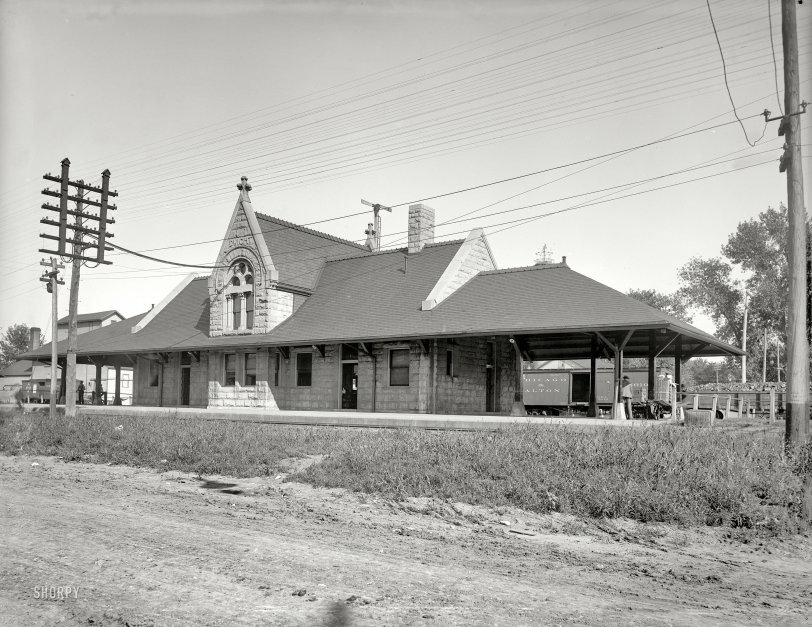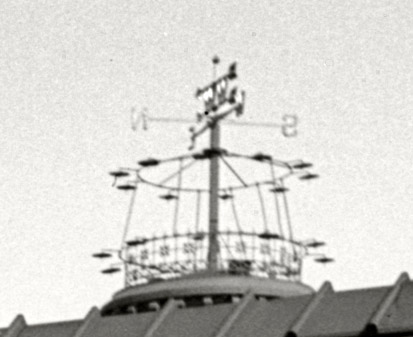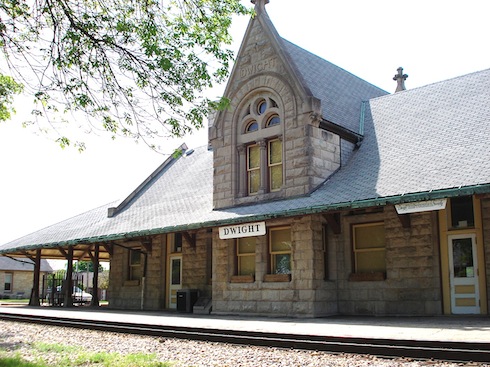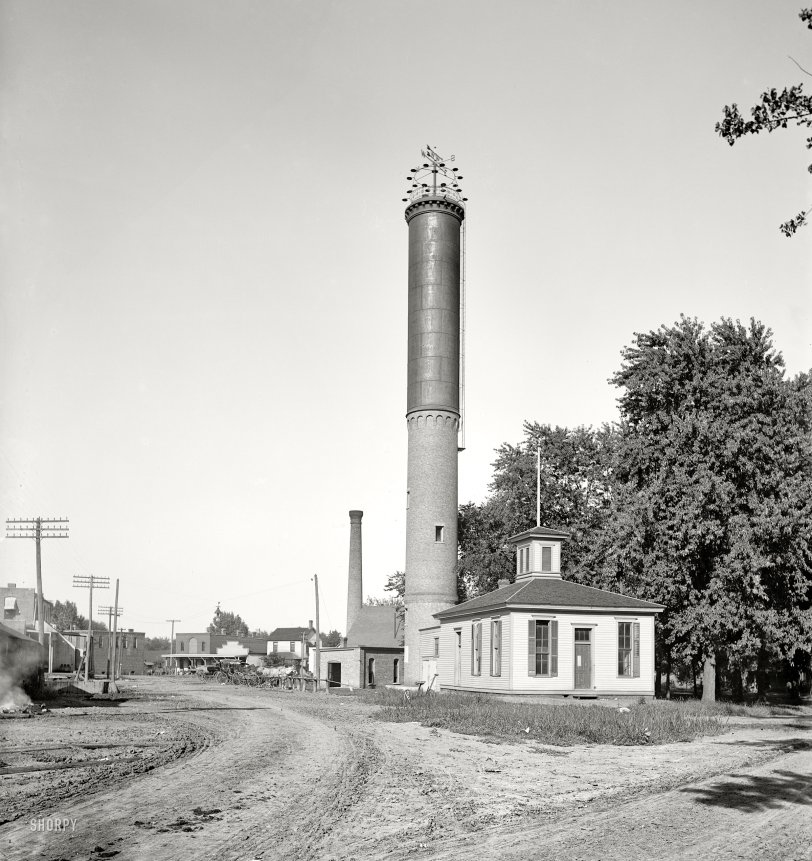


Framed or unframed, desk size to sofa size, printed by us in Arizona and Alabama since 2007. Explore now.
Shorpy is funded by you. Patreon contributors get an ad-free experience.
Learn more.

- Freeze Frame
- Texas Flyer wanted
- Just a Year Too Soon
- WWII -- Replacing men with women at the railroad crossing.
- Yes, Icing
- You kids drive me nuts!
- NOT An Easy Job
- I wonder
- Just add window boxes
- Icing Platform?
- Indiana Harbor Belt abides
- Freezing haze
- Corrections (for those who care)
- C&NW at Nelson
- Fallen Flags
- A dangerous job made worse
- Water Stop
- Passenger trains have right of way over freights?
- Coal
- Never ceases to amaze me.
- Still chuggin' (in model form)
- Great shot
- Westerly Breeze
- For the men, a trapeze
- Tickled
- Sense of loneliness ...
- 2 cents
- Charm City
- What an Outrage
- Brighton Park
Print Emporium
Dwight Depot: 1900

Circa 1900. "Chicago & Alton station at at Dwight, Illinois." Home to a very healthy looking telegraph pole. Detroit Publishing glass negative. View full size.
Subtle
How the roof pitch changes from the shallow pitch over the open areas to the steeper pitch over the building proper. Very nicely done. Glad it's still around to enjoy.
The Far Side
In 1900, Dwight was a junction. The C&A had a branch line extending to Lacon and Washington, Illinois. That must be the track in the foreground, which apparently is now gone. The main line, where most of the traffic and business would have been transacted, and which is still there, is on the far side of the building.
Little tiny depot
Now there is a building just destined to be constructed as part of someone's model railroad layout!
Victorian internet
The telegraph cables slipped through the window connected Dwight to the world wide web of the Victorian era.
Crazy weathervane
Anyone have any idea what the contraption is below the wind vane above the right side extension of the building?
Is it on the depot or the structure behind it?
Looks like there could be a glimpse of a grain elevator directly below it, under the roof line.
[It's electric lights atop this water tower. - Dave]

Another View
This shows a birdseye of the front, sans poles.
Next Stop: the White City
To those of you familiar with Dr. H.H. Holmes or Erik Larson's bestseller "The Devil in the White City," Dwight was home to the famous Dr. Keeley's "gold cure" for alcoholism. It was this program that brought not only throngs of the rich-and-famous, but Holmes's assistant, Benjamin Pitezel to Dwight. While there Pitezel met Emeline Cigrand, a beautiful typist at the institute. Unable to resist, Holmes would offer Emeline twice her salary to come to Chicago to work for him.
One can almost picture the naive Emeline waiting for her train, less than a decade before this picture was taken. Like so many girls of the gilded age, she fell victim to the lure of the big city. Unfortunately for Emeline, that would not be all to which she risked falling victim...
Climbing the pole
I just realized (in the full size view) that poles don't have those metal "rungs" any more for climbing the pole. I guess all service work is now done from a cherry picker.
Healthy is right!
Thanks for all the recent pics with insulators. I was getting kind of jittery without them!
You have a following of insulator collectors waiting in the shadows for me to be the watchdog and tip them off when you post shots of old glass and porcelain insulators in use.
Merry-go-round for the birds?
Odd looking weather vane!
The poles
I just looked the telephone poles. They are made of old "curvy" wood which maybe has grown somewhere in north. In addition I wonder how carefully the timber parts are finnished: A small "roof" up on each!
Architectureville, IL
Dwight is also home to a 1905 bank designed by Frank Lloyd Wright, the 1933 Ambler's Route 66 Texaco Gas Station, and the 1857 "Carpenter Gothic" Dwight Pioneer Gothic Church.
Now a historic Amtrak site.
From Red Carpet Corridor:
Built in 1891, the depot was designed in the Richardson Romanesque style, measuring 75' x 25' surrounded by an 18' concrete platform. The foundation is Joliet stone and the building is made of Bedford bluestone from Indiana. Gables extend from each side with four double hung windows on the ground floor. The second story features two coupled windows with a fanlight over each. The facing stone above the fanlight has DWIGHT carved it in. Each gable has a quatrefoil ornament on top.
In 1983, the Dwight Historical Society bought the depot from the town. Restoration began in 1984 to transform the building into our Village Hall. When the village built a new Village Complex in 1998, the Dwight Historical Society moved the Museum into the north end of the building. The south end is a meeting room for the Historical Society and also houses the office of the Dwight Chamber of Commerce.


























On Shorpy:
Today’s Top 5